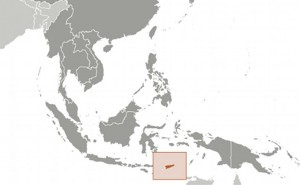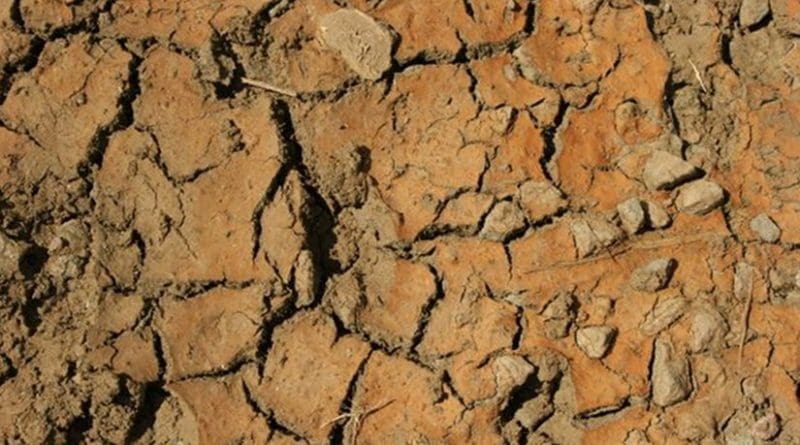Lessons From The Field: Timor-Leste And El Niño – Analysis
By RSIS
Timor-Leste’s response to the El Niño emergency in 2015-16 has exposed the challenges ahead as climate-induced disasters become commonplace in the future.
By Foo Yen Ne*
Against the backdrop of a freak storm this month in Malaysia and typhoon in Vietnam, one is reminded of the effects of climate change and the contrasting El Niño which hit Timor-Leste in 2015-2016. The 2015/2016 El Niño cycle was one of the most severe recorded. For the Asia Pacific region, the extreme weather event brought prolonged drought conditions that affected some 4.7 million people. The island state of Timor-Leste was one of the worst hit in the region; some 120,000 people in five districts were exposed to food and water insecurity as aquifers dried up.

As climate-induced disasters become commonplace in future, food and water security have implications on Timor-Leste’s long-term socio-economic development. Affected Timorese communities coped with drought conditions by seeking alternative food and water sources, selling assets, taking debt for food, reducing food portions and altering their diets.
Lingering Drought
These coping mechanisms do not cease when drought conditions retreat. Subsistence farmers’ inability to farm and harvest crops and feed livestock affect livelihoods and incomes for seasons to come. In turn, Timorese communities whose capacity to cope is already stretched are unable to pay for basic needs and send children to school.
The Timor-Leste government and humanitarian actors were well-informed of the risks of El Niño. Farmers and government officials noticed the decline of agricultural yields and delayed rains. Humanitarian agencies conducted joint consultations, satellite mapping, needs assessments and shared information with other stakeholders as the El Niño gradually unfolded.
All combined to soften the impact of the drought that followed. The government developed and disseminated radio messages to prepare farmers on how to mitigate the drought effects and procured rice stock for sale and distribution to ease the pains of inflated food prices. Local and international humanitarian agencies distributed drought resistant vegetable seeds, water filters, installed water tanks and rainwater harvesting equipment, gave unconditional cash assistance and conducted awareness sessions on drought mitigation.
These measures notwithstanding, the human and economic toll of the El Niño continues to manifest long after the drought. An assessment conducted by Red Cross Timor-Leste in September 2017 found that 67% of households in drought-affected municipalities were still experiencing the effects of the last drought.
Farmers continued to suffer from low agriculture harvests two seasons later. Some communities, it was reported, may take up to two years to recover. A lengthy recovery magnifies Timor-Leste’s pre-existing vulnerabilities such as widespread poverty and high incidence of malnutrition.
Based on a recent field visit, three challenges to effective disaster response to the 2015/2016 drought could be identified in Timor-Leste.
Too Little Too Late
First, direct action to alleviate the initial impact of the El Niño on communities were limited until the scope and severity of the drought became apparent and irreversible. One reason may be that the El Niño-induced drought was mistaken to be an extended “hungry gap”, a reference to an unproductive period between when the stocks of the last harvest have depleted and the beginning of the next harvest season. This is attributable to the slow-onset nature of an El Niño.
The impact of the drought was difficult to define, inconsistent across affected areas and were neither immediately seen nor felt to justify an emergency response. Actors tended to wait for more data before mobilising resources towards a committed response.
Presumably, this was reflected in the Timor-Leste government’s decision not to declare a state of emergency during the El Niño. This limited the options for response to the drought. In particular, international agencies affiliated to the United Nations (whose presence in Timor-Leste was sizable) were restricted by their mandates and were not able to access additional funds intended for emergency situations.
There is need for humanitarian actors in Timor-Leste to recognise the creeping character of a slow-onset disaster. Developing an agreed community-level baseline indicators such as food prices, access to water and agricultural yields that trigger emergency response may be a start for preventing a ‘wait and see’ approach that leads to late intervention.
Capacity and Coordination
Second, the need to enhance Timorese capacity for disaster management cannot be overstated. At the moment, physical capacity limitations such as poor road networks, telecommunications and water supply systems adversely affect disaster response and constrain access to aid. Local communities are ill-equipped with knowledge and practices for reducing risks, mitigating and adapting to natural hazards.
Government ministries responsible for disaster management also lack technical experts and adequately trained first responders, leading to disproportionate reliance on non-state actors to shoulder disaster response duties. Strengthening institutional capacity and community resilience to withstand disasters is made difficult by economic insecurity of the Timorese people and its government. But, failing to prioritise it risks perpetuating the cycle of disaster-related vulnerability.
Third, integrated coordination among actors in the crowded humanitarian landscape in Timor-Leste is still absent. Emergency response planning is concentrated in Dili where policy makers and development actors coordinate response through a multi-stakeholder forum, the Humanitarian Country Team (HCT).
The HCT meets periodically to facilitate information sharing and response planning. But, local governments and community-based actors who have access to communities in need are excluded and organise separately. Overlaps in resilience programs, duplication of effort, uneven aid distribution and wastage of scarce resources also occur often.
The drought of 2015/2016 is not likely to be an aberration. The frequency and severity of climate-related disasters will increase. A patchwork of humanitarian aid efforts will offer immediate relief to some. But, if Timor-Leste was to address the underlying vulnerabilities that expose its people to natural disasters, it must have a disaster management structure that tackles the challenges above.
*Foo Yen Ne is a Senior Analyst with the Centre for Non-Traditional Security (NTS) Studies at S. Rajaratnam School of International Studies (RSIS), Nanyang Technological University (NTU), Singapore.

